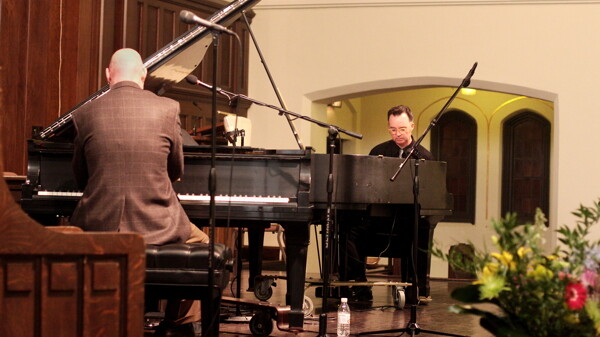Hanging Up the Rags
aging organizers, audiences lead to ragtime fest’s end
Tom Giffey, photos by Andrea Paulseth |

2010 Eau Claire Ragtime Festival.
Like the century-ago era when the genre’s syncopated tunes topped the charts, the Eau Claire Ragtime Festival has passed into history. Organizers announced during the 15th annual fest, held Jan. 10-12, that this year’s gathering – which brought performers and fans from around the nation together to enjoy the music and raise money for Chippewa Valley charity – would be the last.
Closing the piano lid for the last time was a bittersweet decision, organizers say, but it was one made for several reasons, including aging and dwindling audiences, a rising number of competing cultural options, and old-fashioned organizer burnout. “The No. 1 reason is that those of us on that board are time to be done with that responsibility,” said Lorraine Henning, president of the festival’s board of directors.
“It’s not because it’s been a failure,” quickly added festival founder Jim Radloff. On the contrary, in the course of 15 years the festival raised more than $100,000 for five area charities on a rotating basis. “If you can give away six figures after you pay your bills, you’ve shown a lot of community support,” Henning noted.
The festival wasn’t even intended to be a festival when it began in 2000. That year Radloff, an Eau Claire ragtime aficionado and performer, brought noted ragtime pianist Bob Milne to town to play a fund-raising concert for Feed My People Food Bank. Four hundred people attended, $1,850 was raised for Feed My People, and an idea was born that within two years grew into a three-day festival during the dark depths of January. Proceeds went on a rotating basis to other nonprofits, including Interfaith Hospitality Network, Chippewa Valley Free Clinic, the Community Table, and Chippewa Valley Habitat for Humanity. The festival eventually became a nonprofit organization itself, but the festival remained at First Congregational United Church of Christ. Free use of the church’s facilities saved organizers money on venue rental and allowed them to finish each year in the black – a rarity for such festivals.
As the festival grew, however, it began to require year-round attention from organizers, who had difficulty recruiting young blood for their board. At the same time, the Chippewa Valley’s entertainment scene began to blossom, and the ragtime festival was no longer the only mid-January attraction for cabin fever-suffering music lovers. “There’s much more competition now for people’s ticket money,” Henning said. “It’s all for the good that we have a richer cultural scene all around, but it hurts some of the small events.”
Finally, demographics took their toll on the festival. While the niche genre of ragtime still has its devoted acolytes, the heyday of ragtime was a century ago, and the bulk of its fans are getting on in years. “We’ve had an older audience, and they don’t last forever,” Henning said, noting numerous loyal attendees have moved away or died. About 400 people attended one of the three major concerts during this year’s festival, roughly the same number who attended the single concert that started it all 14 years ago.
“We wanted to go out on a high note, when we were still a viable, memorable experience” and before attendance dwindled to nothing, Henning said. “We’re all ready to move on,” added Radloff, who explained that a separate organization he’s involved with, the Chippewa Valley Ragtime Society, will continue to host concerts. “It was a very successful thing for a long time.”




















